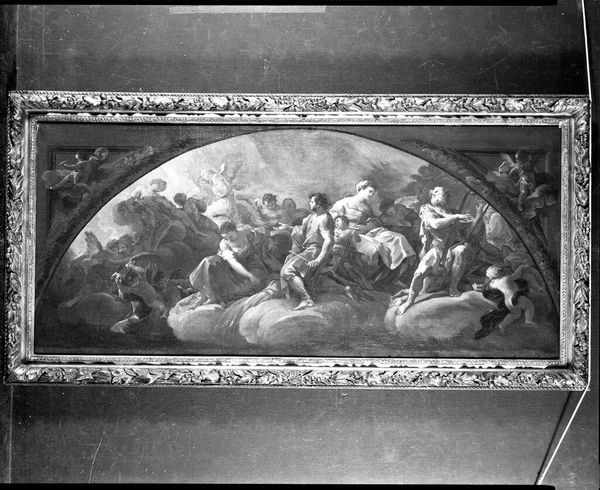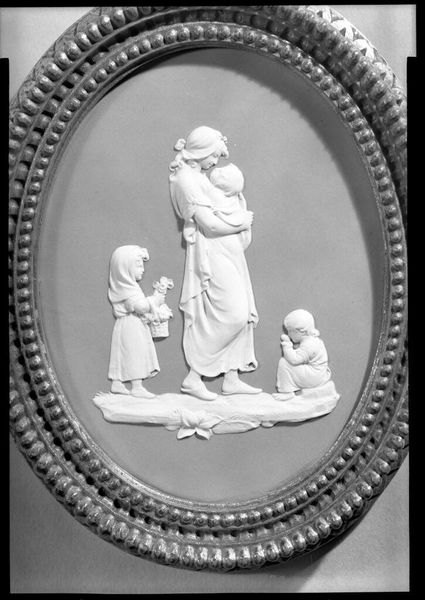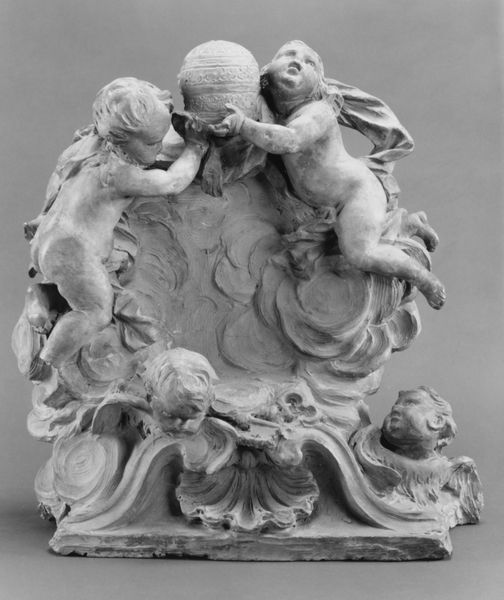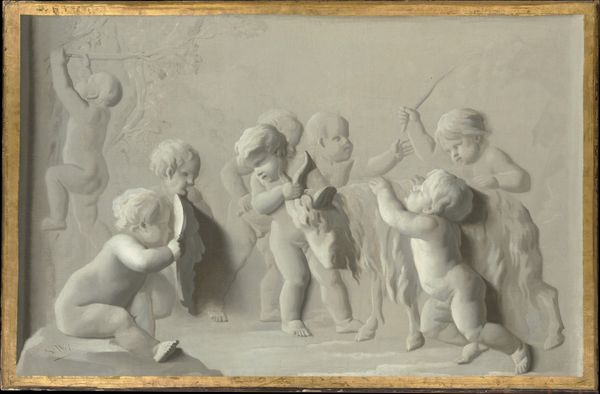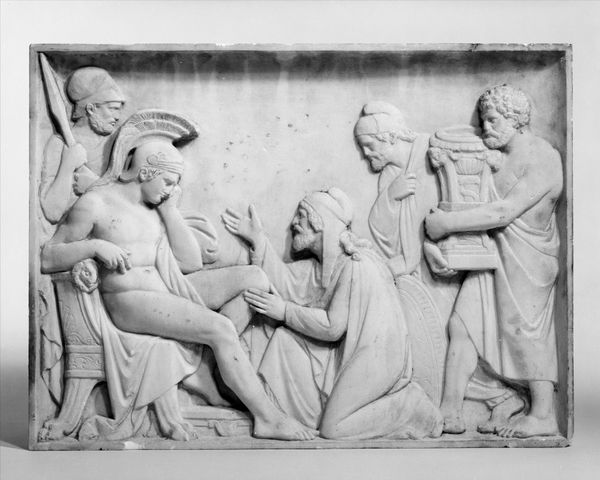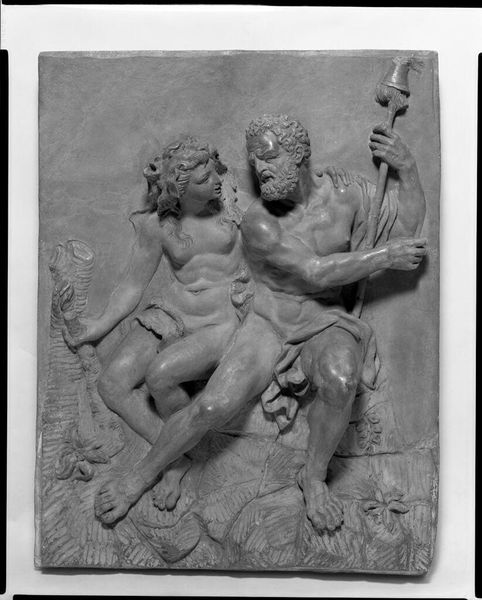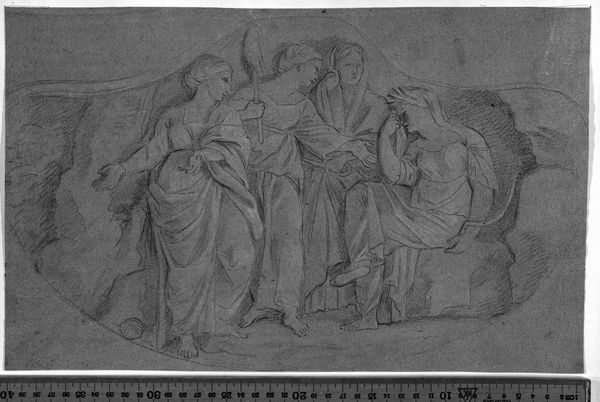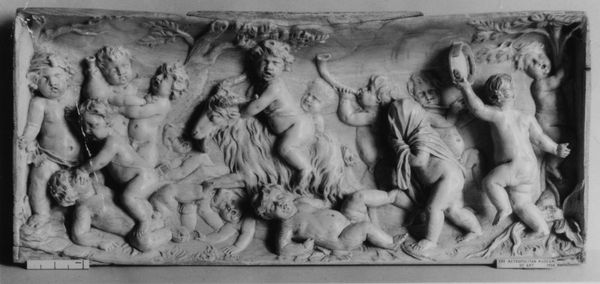
Dimensions: Overall: 27 1/2 × 36 3/4 in. (69.9 × 93.3 cm)
Copyright: Public Domain
Curator: Piat Joseph Sauvage created "Putti with Birds," sometime between 1750 and 1799. The piece is a delicate relief sculpture currently housed at the Metropolitan Museum of Art. Editor: My first impression is one of softness, almost ethereal. The monochromatic carving, all in shades of white, lends it a dreamy quality, like a scene from a particularly gentle fairytale. Curator: Absolutely, the Rococo style is all about lightness and playfulness. Look at how Sauvage uses the imagery of putti, these cherubic figures, interacting with birds. It speaks to a larger cultural obsession with innocence and natural beauty, a sort of idyllic escapism prevalent in pre-revolutionary France, particularly in courtly circles. It presents an idealized vision far removed from the social realities of the era. Editor: What’s compelling is how the sculpture's very materiality supports that vision. Consider the act of carving – the slow, deliberate removal of material to reveal these soft forms. The work required incredible precision. Are the textures mimicking ivory, maybe a plaster composite? This precision of labor transforms potentially common matter into something idealized. The relief also has a spatial dynamism, the overlapping of figures creates movement. Curator: Indeed, the composition adds layers to this interpretation, considering these weren't simply whimsical decorations. The relationship between the putti and birds could be allegorical, representing perhaps the soul's liberation, or the fleeting nature of beauty and youth, something central to the visual language of the Rococo. Editor: And beyond symbolic interpretations, it draws interesting attention to animal commodification and leisure during the era, from where did the artist source these birds, how available were they and at what cost? Curator: A crucial element is to acknowledge its role within larger historical systems of power and patronage. These works often functioned as status symbols, reinforcing the wealth and taste of the elite. The commission of such an ornate piece undoubtedly provided economic support for the artist, reflecting the dynamics between artist and aristocracy. Editor: So, in this relatively small artwork we observe labor, context and an idealistic narrative all in one material object. Thank you! Curator: Thank you, through it all, art offers so much, no?
Comments
No comments
Be the first to comment and join the conversation on the ultimate creative platform.

